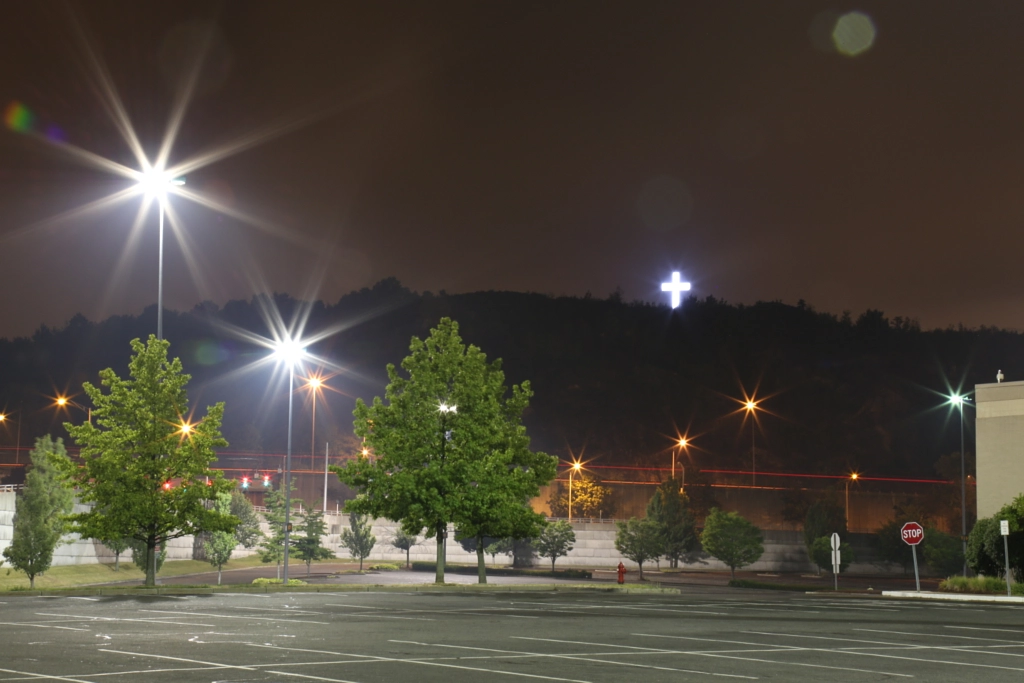Today we're going to look at something that you've seen before, but may not know the name of: diffraction spikes. Let's start with an example. The lights on the left side of this image have strong diffraction spikes, but if you look closely, all of the light sources in the image have them.
First a little background. Some of you may remember from physics class that light behaves like a wave. (If you don't, or if you haven't had that class, that's ok.) Because light acts like a wave, it diffracts (bends) when it passes through a hole. In a circular aperture, like a lens that's fully open, the diffraction is equal in every direction. The stop in the camera is approximately circular, but not quite. Those corners are what creates the spikes.
(For a more information about the topic, check out the Wikipedia article on them. Optics is a big topic, and I really can't do it too much justice in the short form blog entries.)
That said, you don't get spikes automatically every time. Why not? To vastly oversimplify, the light needs to be coming straight into the camera, and there need to be a lot of photons. That means that you need a bright source and/or a long exposure.
Subscribe to:
Post Comments (Atom)
Programmer vs Software Engineer: The Interview
A common question presented in interviews for developer positions goes something like this: Given an array of numbers, write a function th...
-
A common question presented in interviews for developer positions goes something like this: Given an array of numbers, write a function th...
-
Day 27: Below Metro North Waterbury Line train heading north through Seymour, CT.
-
Day 28: Bright A bit more experimental today. Edited to make it more ethereal and to soften the edges. And with that Phebruary is ov...



No comments:
Post a Comment
All comments are moderated. I have a life, so it may take some time to show up. I reserve the right to delete any comment for any reason or no reason at all. Be nice. Racist, homophobic, transphobic, misogynist, or rude comments will get you banned.